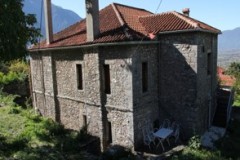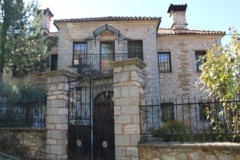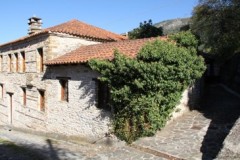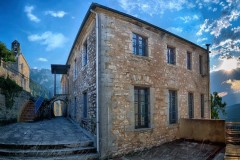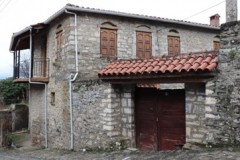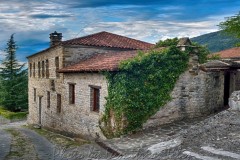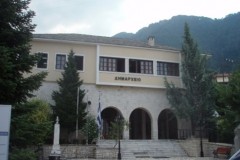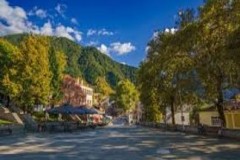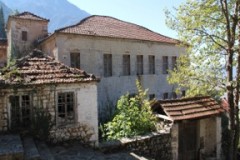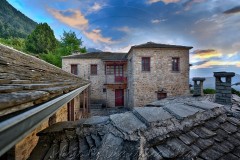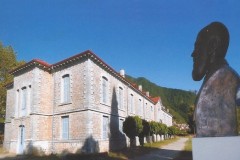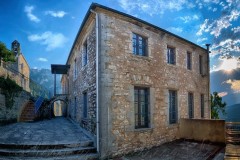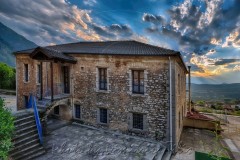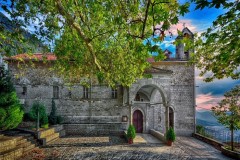The Upper Town of Konitsa has been designated as a protected traditional settlement and preserves its picturesque, impressive traditionally preserved stone-built mansions, old churches and fountains. Going up the cobbled road from the City Hall, the mansion of Hussein Bey Sisko (built in 1845), the impressive mansion of Hamko and the Toga house (built in 1890 and used as a hospital during World War II) are of interest. These buildings are the most characteristic examples of the architecture of the Ottoman period.
Continuing along the stone-paved alleys, we come across the stone-built church of Agios Nikolaos. It is an impressive church, built in 1842, (there was a church from 1612 in the same place) which houses many icons and a wood-carved iconostasis of the time that is worth seeing.
Continuing downhill from the church of Agios Nikolaos the tour of the stone alleys is an unforgettable experience. The visitor can admire from a close distance the beautiful preserved mansions in combination with the amazing view while descending the alleys of the Upper town. The green valley ahead and the three rivers that cross it (Aoos, Voidomatis and Sarantaporos) compose a beautiful landscape.
Arriving again at the Town Hall from the south-east side, we come across the building that houses the Klearchos Papadiamantis Foundation which is also the Municipal Art Gallery. The main purpose of the foundation is the cultural development of Klearchos Papadiamantis’ homeland, Konitsa.
Crossing the main road we are led to the cobbled old market and the historical center of the city, and continuing we face the modern central square with plane trees, incorporating the pulse of the new fabric of Konitsa. Following the main road, we end up in the northwest of the city, at the outer gate of an aesthetically extensive green grove, which today has a vineyard planted in a large part of it. The path leads us to the center of the farm to an impressive stone building with functional spaces and great architecture, the Anagnostopoulios Agricultural School. It was built in 1925 at the expense and according to the will of the great benefactor Michael Anagnostopoulos (1838-1906) from Papigo, Zagori, who was for many years director of the Perkins School for the Deaf in Boston, United States of America. It functioned for several years as an Agricultural School during which standard methods of agricultural education were implemented according to European and American models. Later the building was given to various uses, mainly as an educational institution (Technical School, Technical & Vocational High School, etc.).
*Access is carried out in combination with a car and on foot

